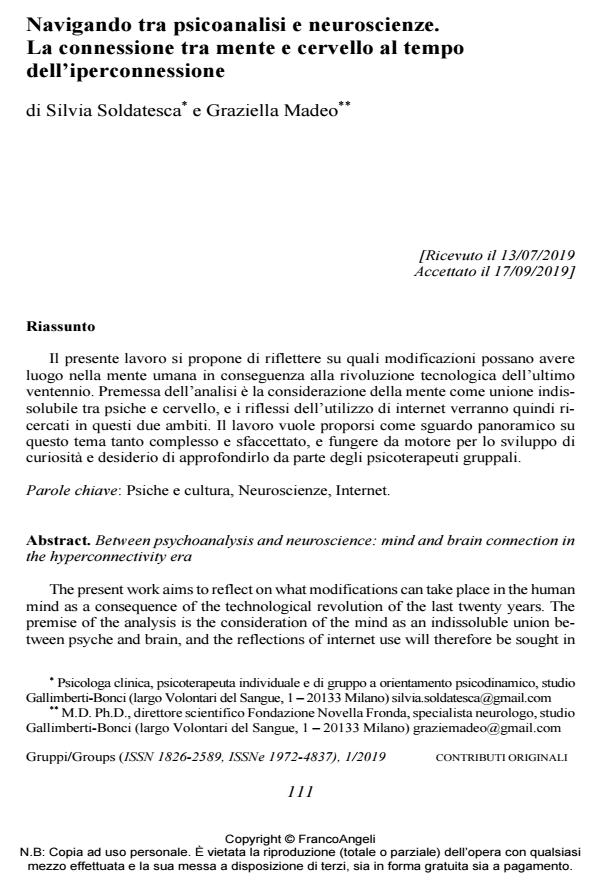Navigando tra psicoanalisi e neuroscienze. La connessione tra mente e cervello al tempo dell’iperconnessione
Titolo Rivista GRUPPI
Autori/Curatori Silvia Soldatesca, Graziella Madeo
Anno di pubblicazione 2019 Fascicolo 2019/1
Lingua Italiano Numero pagine 20 P. 111-130 Dimensione file 232 KB
DOI 10.3280/GRU2019-001009
Il DOI è il codice a barre della proprietà intellettuale: per saperne di più
clicca qui
Qui sotto puoi vedere in anteprima la prima pagina di questo articolo.
Se questo articolo ti interessa, lo puoi acquistare (e scaricare in formato pdf) seguendo le facili indicazioni per acquistare il download credit. Acquista Download Credits per scaricare questo Articolo in formato PDF

FrancoAngeli è membro della Publishers International Linking Association, Inc (PILA)associazione indipendente e non profit per facilitare (attraverso i servizi tecnologici implementati da CrossRef.org) l’accesso degli studiosi ai contenuti digitali nelle pubblicazioni professionali e scientifiche
Il presente lavoro si propone di riflettere su quali modificazioni possano avere luogo nella mente umana in conseguenza alla rivoluzione tecnologica dell’ultimo ventennio. Premessa dell’analisi è la considerazione della mente come unione indissolubile tra psiche e cervello, e i riflessi dell’utilizzo di internet verranno quindi ricercati in questi due ambiti. Il lavoro vuole proporsi come sguardo panoramico su questo tema tanto complesso e sfaccettato, e fungere da motore per lo sviluppo di curiosità e desiderio di approfondirlo da parte degli psicoterapeuti gruppali.
Parole chiave:Psiche e cultura, Neuroscienze, Internet.
Silvia Soldatesca, Graziella Madeo, Navigando tra psicoanalisi e neuroscienze. La connessione tra mente e cervello al tempo dell’iperconnessione in "GRUPPI" 1/2019, pp 111-130, DOI: 10.3280/GRU2019-001009